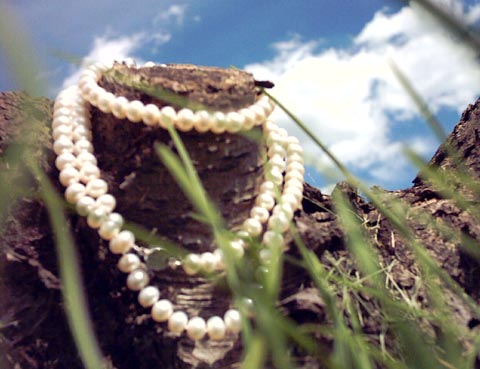Know Your Birthstone
What is your birthstone? Use this handy article to find out.

Headless Pearls Photo by Kari
Did you know that you have a personal connection to the Twelve Tribes of Israel? It's true, and it doesn't even matter if you're not Jewish! If you're scratching your head right about now, fear not, because we intend to make full disclosure. Here's how it works: whether you're aware of it or not, you've got a birthstone, based on the month in which you were born. That's not to say that anyone ever gave you such a stone, curse the luck; it's just that according to tradition, a specific precious or semiprecious stone is associated with your birth month. Mere semantics, you say? Perhaps, but to bring this all full circle, each month has a birth stone because the traditional birthstone gemstones were adopted from gems originally associated with the Twelve Tribes. Chalk up one more Jewish contribution to modern culture.
A stone of your own
Let's take a look at the various birth stones, and their historical associations. Modern birth stones have changed quite a bit, so we'll indicate the new versions when necessary.
- January's stone was originally the hyacinth, a type of brown, red, or amber zircon associated with the Tribe of Dan. Modern folks are more likely to use garnets.
- February's stone, associated with the Tribe of Gad, was and remains the amethyst.
- March's stone was jasper, or bloodstone, and was associated with the Tribe of Benjamin. Nowadays, we prefer the aquamarine, a type of beryl that looks much better in promise rings and cuff links and doesn't have the word "blood" in it.
- April's ancient stone, associated with Issachar's Tribe, was the sapphire; the modern birth stone is diamond.
- For May, Western culture adopted the stone of the Tribe of Naphtali, which was agate; the modern stone is emerald.
- The Tribe of Levi (the traditional Jewish priests) contributed the emerald to June; modern June birthstones are moonstone, alexandrite or pearls.
- July was first represented the Tribe of Zebulon's stone, onyx. Now we use the ruby.
- August's stone, which is now peridot, was originally the Tribe of Reuben's gemstone, carnelian (a banded stone similar to agate).
- September's original stone was the chrysolite of the Tribe of Asher; the modern birthstone is sapphire.
- Initially, October was associated with aquamarine, the beryl of Joseph's Tribe; however, this has been replaced by opal or tourmaline.
- Topaz, the gemstone that was historically associated with the Tribe of Simeon, remains November's birth stone.
- December's modern birthstone is now blue topaz or tanzanite, which wasn't even discovered until 1967. Traditionally, the Tribe of Judah used the ruby.
So now you know
Interestingly enough, not everyone agrees on modern birthstones, but the above list is the one most commonly cited for modern Western culture. Some of you might feel shortchanged because your stone is "merely" semiprecious, but that's no reason to change your official birthday. Many of the semiprecious stones are as attractive (if not more so) than the full-fledged gemstones; agate, for example, is quite beautiful, and so is chrysolite. The only reason they're not considered precious is that they're more common than rubies or emeralds. Learn more about the history of your birthstone.
What is the meaning of pearls?
Enjoy this page? Please pay it forward. Here's how...
Would you prefer to share this page with others by linking to it? - Click on the HTML link code below.
- Copy and paste it, adding a note of your own, into your blog, a Web page, forums, a blog comment, your Facebook account, or anywhere that someone would find this page valuable.
|







